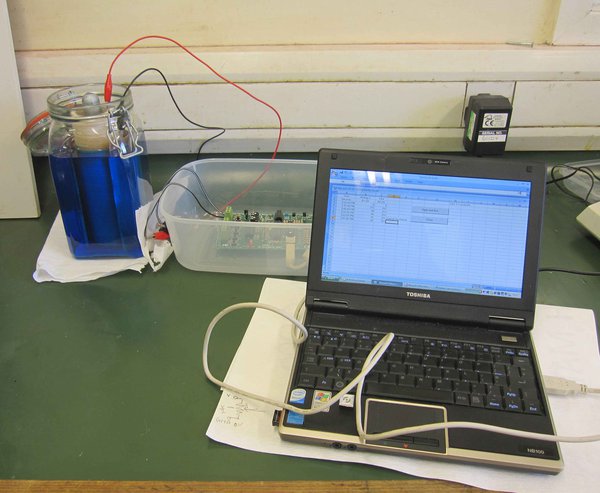Making a 19th century battery
This article was written by Francoise Collanges
My MA project involves making a copy of elements of a mid-19th century electro-mechanical clock in order to see what the process could bring to conservation as a research tool.
One question was how the clock was originally powered and would it be possible to reproduce this today? Research revealed that power was supplied from a type of cell invented in 1836 by John Frederick Daniell, who gave it itsname.
The next questions were: how was the Daniell cell constructed, would it produce a constant enough current for reliable operation of the clock and would the voltage be similar to a contemporary cell? With the support and collaboration of two other West Dean Clocks Programme students, Jonathan Butt and Kenneth Cobb, materials were gathered.
In order to re-create a Daniell cell, the following was needed:

- A porous vase (kindly provided by Alison Sandeman, West Dean pottery tutor).
- A zinc anode (as typically still used for boat protection).
- A copper pipe.
- Sulphuric acid solution.
- Copper sulphate.
- A glass Kilner jar.


As soon as the sulphuric acid was added, the reaction started – the solution inside the vase started to fume and bubble and the cell produced current at its maximum voltage of about one volt. The cell worked constantly for five days (before the porous vase collapsed), with only minor intermittent drops in output (0.2 volts). During this time, the solution level within the vase dropped to almost half, copper crystals formed on the surface and thick crystals were visible at the bottom of the glass jar.
So we successfully made and tested a cell as it may have been made in 1836. Even with testing and research far from finished, it can already be said that:
- this clock was powered with a voltage even less than a modern 1.5 volt battery.
- it did not draw a huge amount of current from the cell, so the life length of the cell should have been of several days at least.
Furthermore, these results suggest that early electric clock systems were used in a different way from how we generally perceive them today.